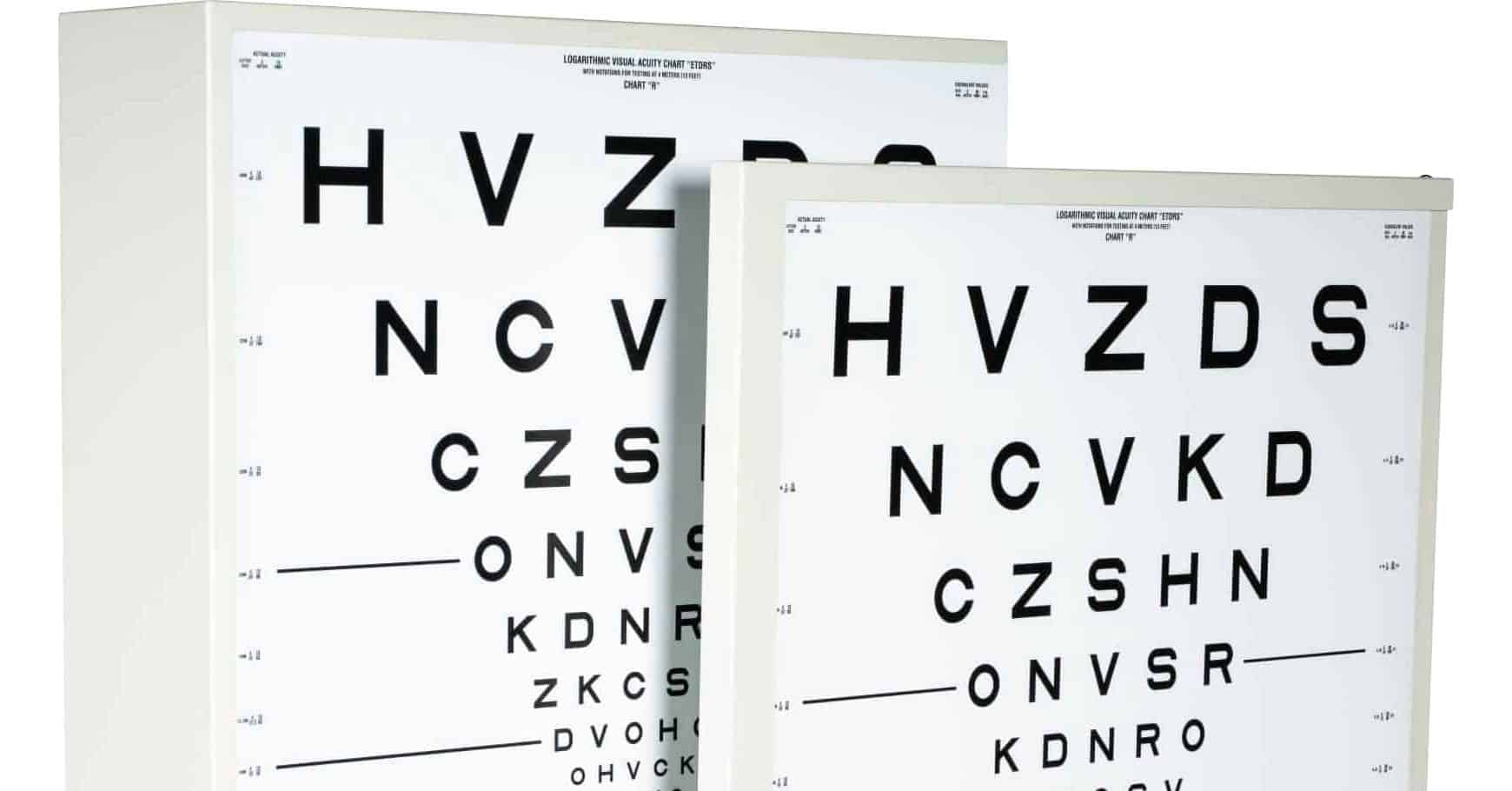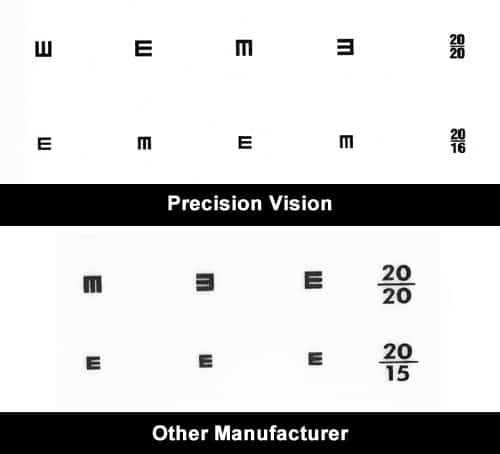
Precise Eye Charts – We are all about Precision and Quality Control – Precision Vision
IN THE NEWS
As a vision care professional, you understand why industry standards are important to the overall quality and effectiveness of your patient care. However, some manufacturers provide inconsisent or poor print quality in their eye charts, which can adversely affect the quality of your service, directly impacting the health of your patients. Here at Precision Vision, our products are considered standards in the vision testing community and we guarantee only the highest standards of print quality. How precise are we? Read on…
How precise IS Precision Vision?
Anyone who’s ever been part of a committee knows it takes weeks, months, sometimes even years before a group consensus occurs, and vision testing guidelines are no different. Not only do committee members have to define what is acceptable to use within various demographics, they also then work towards having those guidelines implemented on local, state or national levels – or even internationally.
But just having a set of guidelines in place is not enough when it comes to vision testing. Perhaps that point is no more obvious than when we start thinking about vision testing for school-aged children. Without ensuring the same amount of time and energy goes into the manufacture of the tests, there is no guarantee that a school district in one township is providing the same quality test to its children as a district down the street.
Although the Landolt C was initially chosen as the international symbol for calibration purposes in 1909, the Tumbling E has become more popular among clinicians, and especially among pediatric clinicians. Unfortunately, because the tumbling E optotype is an open domain optotype, the quality and precision in manufacture are not always consistent – take a look for yourself in this image, where the Precision Vision Tumbling E is on top, and another manufacturer’s is on the bottom. Here at Precision Vision, we guarantee the highest standards of print quality. Our products are considered standards in the vision testing community because of our exemplary quality – just take a look at how crisp and sharp the letters are, the uniform ratio between the strokes, and the constant and consistent spacing among all letter sizes. These details affect recognition of the optotype. Compare our product to the same vision testing toolkit being distributed in the U.S. from an international manufacturer.

Our precise manufacturing controls would never allow a product of such poor quality as in the example to leave our premises. In fact we would have to intentionally attempt to create something as bad as the example. We believe there needs to be a much greater awareness along the entire chain from distribution to end users of these test materials. Doing so would prevent these kinds of discrepancies and inconsistencies between manufacturers from making their way into school districts and other organizations.
Our products are low cost, very durable and very precise. Saving a few dollars on a small purchase isn’t worth the trouble it can cause. From high contrast letter and symbol charts to low contrast, grating acuity and preferential looking we assure our commitment to quality in everything we do.
At Precision Vision we manufacture a full line of high quality vision tests in a broad range of optotypes, test distances and contrast levels, including our proprietary Patti Pics™ pediatric symbol test. Our products are recommended and approved for clinical trials as well as research worldwide, therefore we can assure you that our products are always the highest quality.
PRODUCT PROFILE
One of our research customers recently hired Precision Vision to create scrambled iterations of the following charts to reduce the possibility of memorization. There are 15 variations available for 2106 (SKUs 2106A – 2106O), as well as 5 variations for 2107 (SKUs 2107A-E).
No two charts are alike and they are great tools for researchers. Please call or email to order scrambled versions. Price: $25 each.
SLOAN Two Sided ETDRS Format Near Point Test
This near point chart features highly calibrated Sloan optotypes. They adhere to the Snellen 5×5 grid, equal blur at threshold, and equal difficulty. Also, each optotype is recognizable. This near vision chart also features these optotypes in an ETDRS format on each side. Each side features a different configuration of optotypes for repetitive and reliable testing. This near vision chart is great for clinical use.
SLOAN Multiple Group Near Vision Testing Card, Single Sided
Memorization can alter testing results and create an inaccurate record for the patient. This near vision chart features multiple groups for repetitive testing to help minimize memorization. This helps to create a more accurate and reliable vision chart that yields repeatable results.
CONTACT US
Share Your Stories With Us!
Precision Vision® wants to hear your stories. Tell us how you are impacting the industry. Do you have an interesting story to share about a Precision Vision® product? Contact us and we may use it in a future newsletter.






